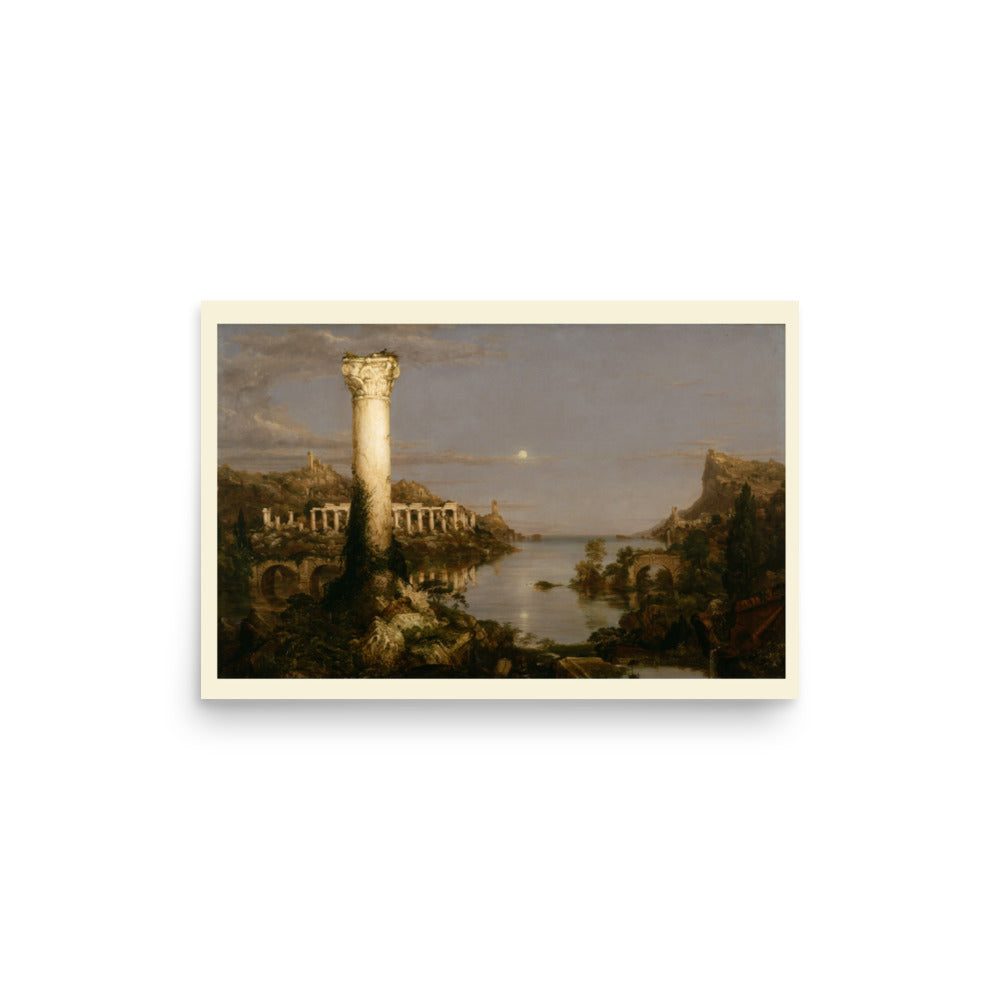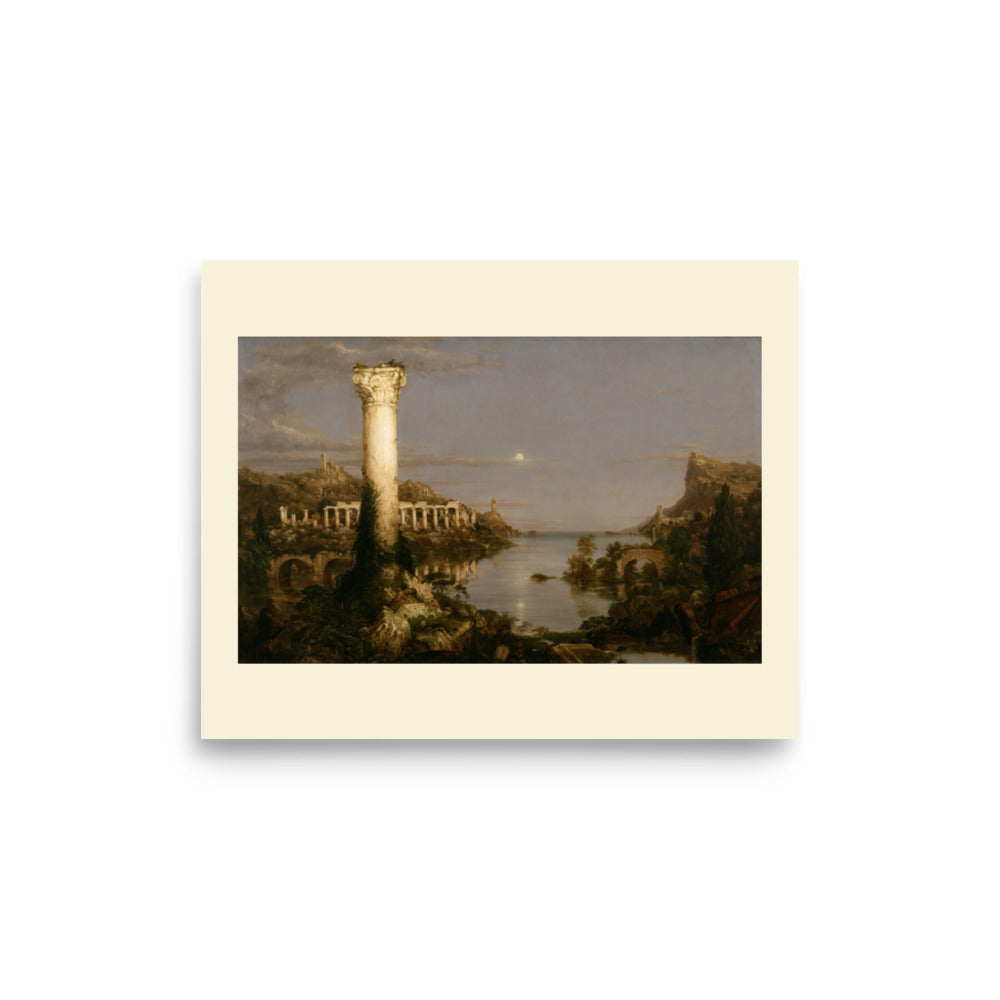








Desolation Thomas Cole The Course of Empire Art Print
The fifth painting, Desolation, shows the results decades later. The remains of the city are highlighted in the livid light of a dying day. The landscape has begun to return to the wilderness and no humans are to be seen; but the remnants of their architecture emerge from beneath a mantle of trees, ivy, and other overgrowths. The broken stumps of the pharoi loom in the background. The arches of the shattered bridge and the columns of the temple are still visible; a single column looms in the foreground, now a nesting place for birds. The sunrise of the first painting is mirrored here by a moonrise, a pale light reflecting in the ruin-choked river while the standing pillar reflects the last rays of sunset. This gloomy picture suggests how all empires could be after their fall. It is a harsh possible future in which humanity has been destroyed by its own hand.
COLE'S DESCRIPTION:
The fifth picture is the scene of Desolation. The sun has just set, the moon ascends the twilight sky over the ocean, near the place where the sun rose in the first picture. Day-light fades away, and the shades of evening steal over the shattered and ivy-grown ruins of that once proud city. A lonely column stands near the fore ground, on whose capitol, which is illumined by the last rays of the departed sun, a heron has built her nest. The doric temple and the triumphal bridge, may still be recognised among the ruins. But, though man and his works have perished, the steep promontory, with its insulated rock, still rears against the sky unmoved, unchanged. Violence and time have crumbled the works of man, and art is again resolving into elemental nature. The gorgeous pageant has passed — the roar of battle has ceased — the multitude has sunk in the dust — the empire is extinct.
Museum-quality posters are made on thick and durable matte paper. Add a wonderful accent to your room and office with these posters that are sure to brighten any environment. (Frame not included.)
• Paper thickness: 10.3 mil
• Paper weight: 5.57 oz/y² (189 g/m²)
• Giclée printing quality
• Opacity: 94%
• ISO brightness: 104%

Collections: Father's Day, Handmade | Made by Hand by Maniacs, Home, Home and Living, Liberty Maniacs Wall Art | Posters and Prints, New Arrivals, Prints | Museum-Quality Art Prints, Wall Art | Prints, Canvases, Flags, Signs, and Metal Art
Type: Poster
Category: 19th century, allegorical, art, art print, civilization, classical paintings, cycle, desolation, landscape, liberty maniacs, oil painting, painting, poster, posters, The Course of Empire, Thomas Cole, wall art, western civilization
















